Sanskrit and Tamil
Is Tamil older than Sanskrit? There are two paths in approaching this question. Both paths lead to the same answer.
First path is answering this question as a Hindu: According to Hindu scriptures, Sanskrit is Devabhasha. Language of Gods themselves before the world even existed. As such, no language can be older than Sanskrit.
Second path is answering this question according to modern science and western Indology. According to Indologists, Rigveda is at least 3500 years old. This is academic consensus. Therefore, it predates earliest Sangam Tamil literature by 1000 years if not more.
In Kamba Ramayana, Kamban addresses Valmiki as Adikavi(“First poet”). He does not know or address any sangam poet in such manner.
That Tamil is older than Sanskrit was not imagined or claimed before the British Missionary Robert Caldwell in 19th century.
As such, while Tamil is a very old language it its own right with rich history and literature, it is certainly not older than Sanskrit because of aforementioned reasons.
To be very certain, a language in its basic form cannot be dated. Even a completely unattested Andamanese language will have its ancestral language going back thousands of years. Stone age humans also had their own languages. A language is intertwined, contiguous with its ancestor but also evolving at the same time. Therefore, it cannot be said that one language is older than the other as they are not static points fixed in space and time.
What can actually dated is literature of a language. The time when a language actually enters a literary register and leaves records.
Archaeologically speaking, Old Sanskrit words have been attested as early as 2300 BC in inscriptions of Mesopotamia. Akkadian kings had names like Arisena and Somasena which are perfectly Sanskritic names. This is the earliest known trace of Old Sanskrit (“Old Indo Aryan) in Middle East. This would be followed by the evidence from Kassites and Mitanni in the same region.
Kassite inscriptions from 16th century BC also show the evidence of Old Sanskrit loanwords. Kassite inscriptions recorded old Sanskrit loanwords such as Surya, Maruts, Vayu and Indra.
Mitanni inscriptions of 14th century BC also recorded the names of Old Sanskrit Gods such as Indra, Mitra, Varuna and Nasatyas. Mitannis spoke Hurrian language, but their inscriptions recorded lots of Old Sanskrit loanwords.
14th century BC Mitanni people had Old Sanskritic names like Prītāśva, Citraratha, Indrota, Sātivāja, Subandhu, Tveṣaratha.
All this shows signs of an already developed Old Sanskrit (“Old Indo Aryan”) language.
Therefore, the antiquity of Old Sanskrit is archaeologically attested all the way back to Bronze age without any doubt The same could not be said of Old Tamil.
The earliest known inscriptions of Old Tamil date back from 2nd century BC to 2nd century CE. Linguists and historians refer to this language as Old Tamil as it is an ancestor of classical Tamil language. It is not intelligible to speakers of Tamil and is almost as removed as Sanskrit is from standard Hindi.
Iravatam Mahadevan did extensive research on Old Tamil inscriptions and published his research. At least 25% of the words found in Old Tamil inscriptions were Sanskrit and Prakrit loanwords.
Therefore, even the earliest known specimens of Tamil language had direct Prakrit and Sanskrit loanwords embedded into them. This shows Sanskrit existed from the earliest days of Old Tamil.
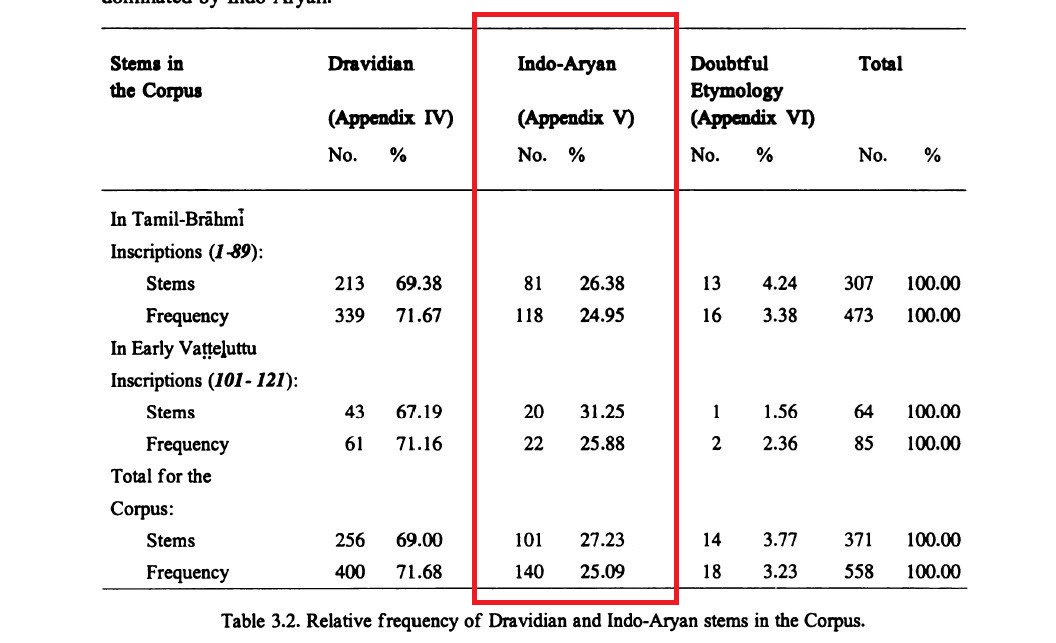
The earliest recorded Tamil language contains numerous loanwords originally from Sanskrit.
Sanskrit words like Adhisthana (=seat/abode), Dana(=religious gift), Grhapati(=householder), Vanika(=trader), Shri, Ghatika(=Vedic school), Nigama(=merchant guild) etc have been attested in oldest known samples of Tamil language.
Sanskrit already existed even in the earliest known Tamil Language.
The earliest recorded Tamil language contains numerous loanwords originally from Sanskrit.
Sanskrit words like Adhisthana (=seat/abode), Dana(=religious gift), Grhapati(=householder), Vanika(=trader), Shri, Ghatika(=Vedic school), Nigama(=merchant guild) etc have been attested in oldest known samples of Tamil language.
Sanskrit already existed even in the earliest known Tamil Language.
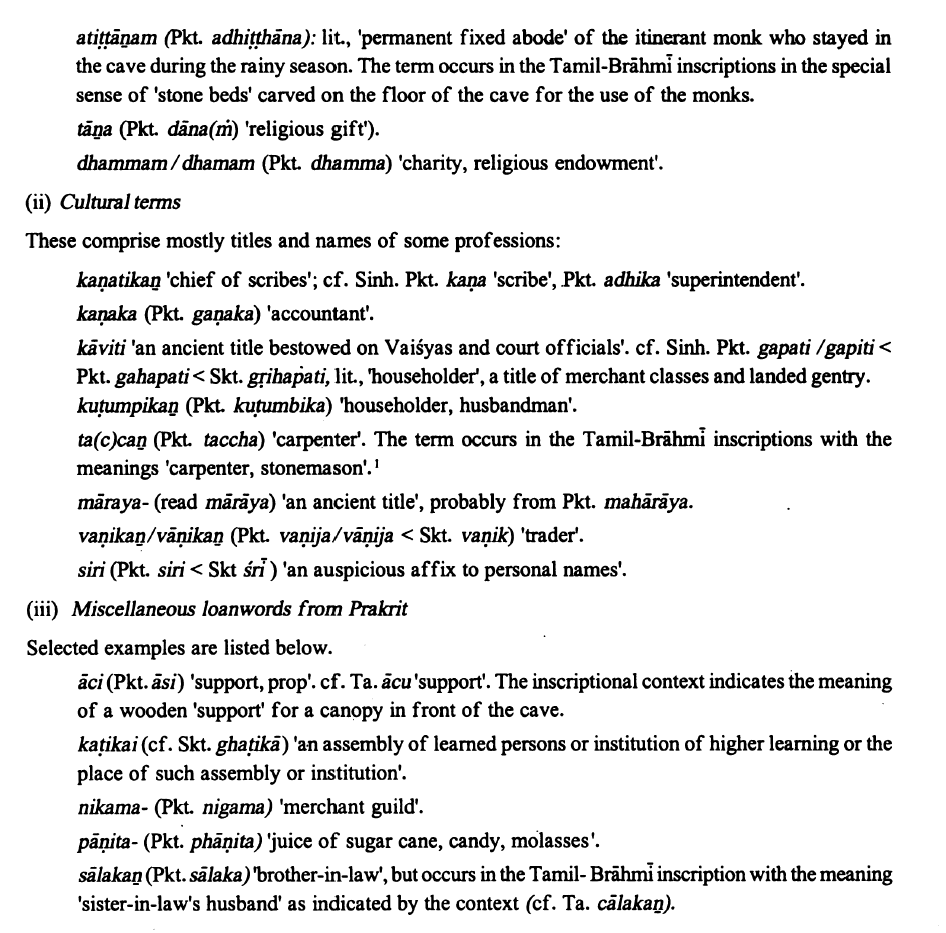
Apart from these inscriptions, Sangam poems and Tolkappiyam grammatical treatise are composed in Old Tamil.
Scholar Linguist Kamil Zvelebil is considered an authority on this subject. He dates Tolkapiyyam back to 100 BC and earliest layers of Sangam poetry back to 1st century BC-2nd century AD. Further, he concedes a lot of later day interpolations.
Historians Iravatam Mahadevan and George Hart have dated the sangam literature in the period of 1st century AD-3rd century AD. Roughly the same date was proposed by historian Meenakshi Sundaran,
However, this consensus was recently challenged by Historian Herman Tieken. He says there is no evidence even for the concept of any “Sangam literature” before 7th century AD . He claims it was created ipse facto in toto by Pandya kings in 8th century and projected onto the past.
Indologist Eva Wilden has taken a more cautious approach. While She dates the Sangam corpus from 1st century AD to 9th century AD, stratifying the literature in several intermittent stages, she also concedes that there is no inscriptional evidence for the concept of ‘sangam’ before 9th century.
Irrespective of its precise dating , it cannot be maintained that Sangam literature predates Sanskrit. Sangam literature shows profound impact of Sanskrit epics Ramayana and Mahabharata.
The Sangam kings claimed their ancestors fed the armies in Mahabharata war. Sangam poets made very frequent references to events of Sanskrit epics like burning of Khandava forest, skills of Bhima in cookery, Rama’s council held under banyan tree in Dhanushkoti, the burning of Tripuras by Shiva, Arundhati as ideal chaste woman, Brahma spring from lotus navel of Vishnu, the story of Vamana, Uttarakuru as land of perpetual enjoyment, Shibi rescuing a bird by his own flesh, Krishna’s battle with Kamsa, Yama with his Pasha etc.
To those saying that Sanskrit is a dead language, by their own yardstick, Old Tamil is also a dead language. It is not spoken and not understood anymore. The Modern Tamil language currently in use is 500 years old.
In reality, languages do not die. They evolve. Sanskrit evolved into Prakrit and ultimately into modern northern languages like Hindi, Pahadi, Kashmiri, Punjabi, Gujarati, Marathi, Bengali etc. Likewise, Old Tamil evolved into Middle Tamil and eventually modern Tamil.
Tamil is one of the greatest classical languages of the world with amazing literary and cultural continuity that only few languages can show.
Starting from the Sangam poems, the great Tamil epics and divine Tevaram poetry culminating into Periyapuranam masterpiece, Tamil has a literary legacy that no Indian language except Sanskrit can show In comparison, the Prakrits are not as dynamic and contiguous. As such, Tamil can be considered the second oldest contiguous language of India. As the great saint poet Appar addressed Shiva “You are the Sanskrit of the North and Tamil of the South”.
Contrary to popular belief, Old Tamil is not intelligible to speakers of Modern Tamil.
Infact, when Sangam age texts were ‘rediscovered’ in 19th century, scholars had to undergo “special training” to understand them as the language had considerably changed.
Lexical items were lost and old words were changed. Even medieval commentators could not understand many words.
Many archaic verb forms of Old Tamil already disappeared by 6th century. Vocabulary was also different. Old Tamil had many words that were lost by medieval age.
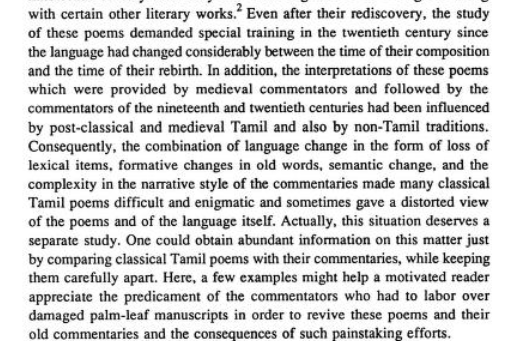
There are claims that “Inscriptions in Tamil has been found from the year 500 BCE”.
And those are misleading.
The claim of “500 BC Tamil inscription” was a politically motivated fraud propagated by Dravidianist researchers. The “inscription” in question was not even an inscription. It was a megalithic logogram. Meghalithic logogram is not script but signs used by early stone age men who were not literate. Here is Indologist Harry Falk busting the myth. There was never any 500 BC Tamil Brahmi inscription. Thus far, no Tamil Brahmi inscription from mainland India can be demonstrably dated before Aśoka.
Snippets excerpted from Harry Falk’s essay “Owners’ graffiti on pottery from Tissamaharama”
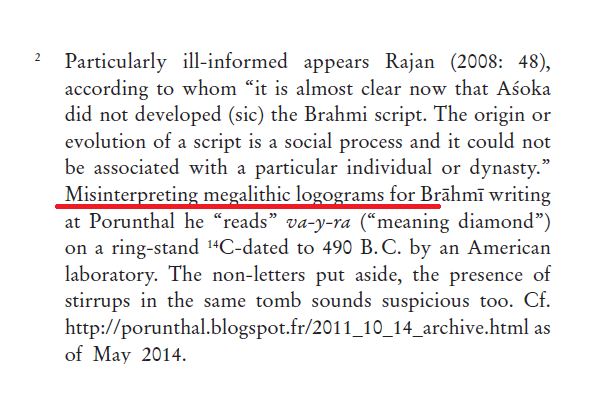
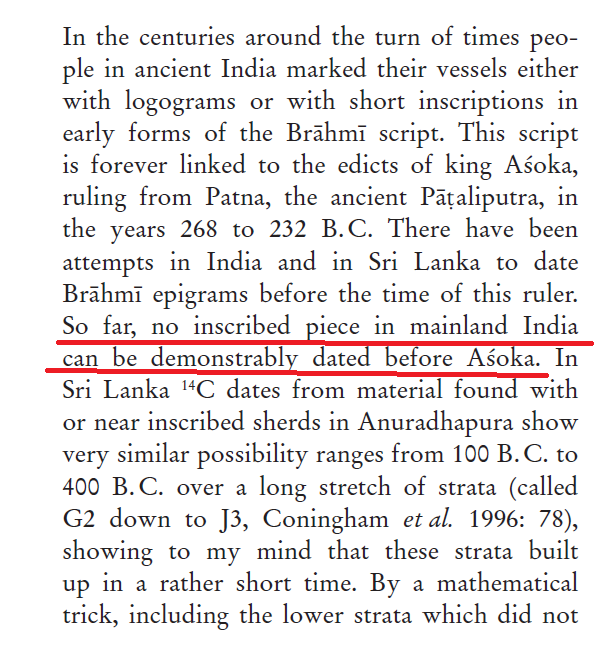
- https://x.com/TrueIndology/status/1819609129561821340
- https://x.com/TrueIndology/status/1819835098411524225
- Looking for the Aryans
- Contacts of Languages and Peoples in the Hittite and Post-Hittite World Volume 1, The Bronze Age and Hatti
- Early Tamil Epigraphy from the Earliest Times to the Sixth Century A.D.